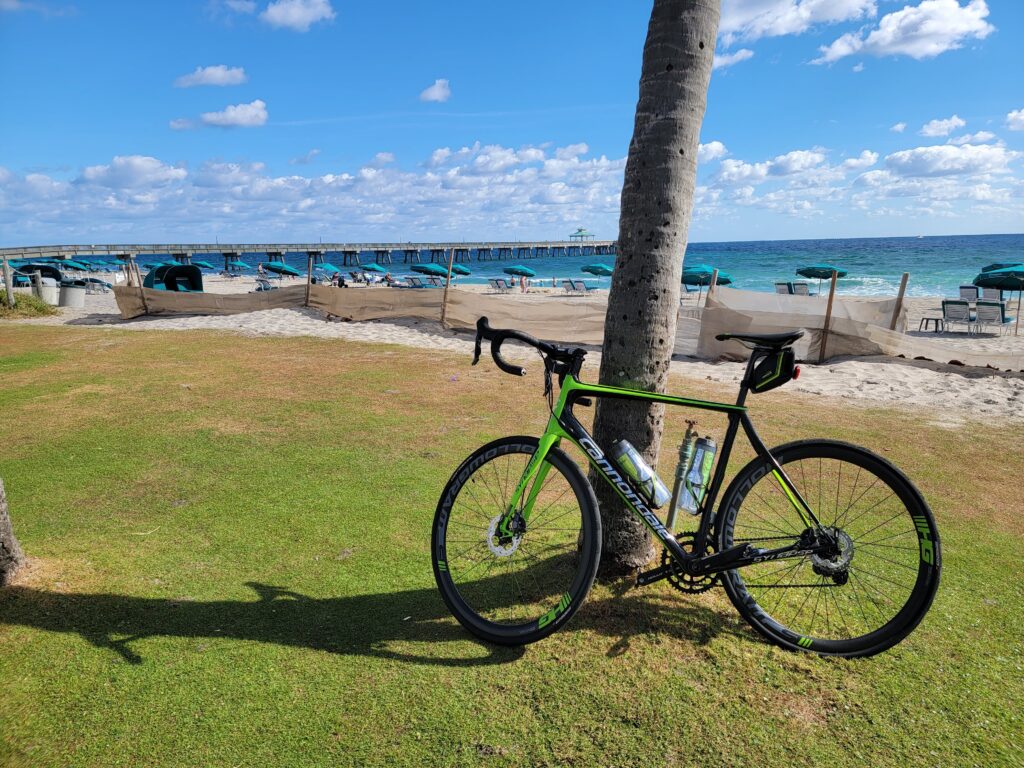
I recently rode over an industrial size staple putting a couple of punctures in my road bike tire. I needed to replace both the tire and tube. While in the bike shop, another guy came in with his bike and he had wider rims and tires on his bike (about 30 inches). I had been reading for the past few months that wider tire are better than narrower ones.
Historically, the road bikes were known for having narrow tires in the range of 23mm and 25mm due to their perceived speed and aerodynamic advantages. It has been a habit of mine to pump up my 25mm tires to 105 psi and to take to the road. But is this the right way to go?
The argument for the the switch to wider tires (in the neighborhood of 28mm to 30mm tires) is that you can have a better riding experience
Better Riding Experience by Smoothing Out the Rough Edges
The most immediately noticeable benefit of 28mm tires is the dramatic improvement in ride comfort. With a larger air volume, 28mm tires can be run at lower pressures than their narrower counterparts without increasing the risk of pinch flats. This lower pressure allows the tire to deform more effectively over road imperfections, absorbing vibrations and bumps rather than transmitting them directly to your body.
On the narrower tires, you feel all the bumps and potholes on the road but with the wider tires, you have an almost built-in suspension for your road bike.
Reduced rider fatigue: You’ll feel less beaten up on longer rides, allowing you to go further and feel fresher.
Smoother ride: The chatter and harshness often associated with high-pressure, narrow tires are significantly minimized.
Surprisingly Faster: The Rolling Resistance Revelation
Counter-intuitive as it may seem, wider tires can actually be faster than narrower ones, especially on real-world road surfaces. While traditional thinking suggested that a smaller contact patch meant less rolling resistance, modern research (and real-world testing) has shown otherwise.
Here’s the science:
Shorter, wider contact patch: A 28mm tire, when run at an optimized lower pressure, creates a shorter and wider contact patch with the road compared to a narrower tire at higher pressure. This shape requires less deformation of the tire’s casing as it rolls, reducing energy loss.
“Suspension losses” minimized: On rougher surfaces, narrower, highly inflated tires tend to bounce and skip over imperfections. This “suspension loss” wastes energy. Wider tires, with their ability to conform to the road, maintain better contact and roll more efficiently over varied terrain.
Unless you’re racing on a perfectly smooth velodrome, the rolling resistance benefits of 28mm tires at appropriate pressures often outweigh any minor aerodynamic penalties for most riders at typical speeds.
Enhanced Grip and Confidence: Sticking to the Road
A larger contact patch also means more rubber on the road, leading to improved grip. This translates to better cornering. You should feel more confident leaning into turns, especially on descents or in wet conditions.
More grip allows for more effective braking, giving you greater control when you need to slow down quickly.
Greater Puncture Protection: A More Resilient Ride
While not a guarantee against all flats, 28mm tires can offer a subtle advantage in puncture resistance. Running at lower pressures means the tire is less taut, making it slightly more forgiving when encountering small sharp objects. The increased air volume significantly reduces the likelihood of pinch flats, where the inner tube gets pinched between the rim and an obstacle.
Challenges
Before I could install the wider tires, I had to have my bike’s frame and fork checked to make sure that I had room for them. While most recently manufactured road bikes are designed to fit 28mm (or even bigger), my 10 year old bike has certain limitations. Fortunately enough, my bike could handle the 28mm tires (but nothing more!). I did pass on the wider rims and realized that I would sacrifice some performance.
Conclusion
I went with the wider tires (28mm) and it looks like a great decision. I took out my bike on the same route that I did last week to see how the ride was and any speed impacts. My bike ride was significantly smoother than my riders with the narrower tires. When I say significantly, I mean, it could have been 30% to 50% smoother. I heartly felt any bumps in the road. My body is feeling much more refreshed than it did with the narrower tires.
My key question was speed. While I did not put as much faith in the science as I should, I had to see it in practical life experience to believe it. By riding the same course as last week, I tried to minimize the differences. I will acknowledge that there was a 5 mph wind difference (today was higher) but other than that, most of the other conditions were similar (temperature in the mid 70’s and traffic comparable). My average mph with the wider tires was similar to the average with the narrower tires (in fact, it was slightly faster with the wider tires but not materially).
From my short time with the wider tires, I only see positives. My ride comfort has improved while no reduction is my speed.
Based upon my experience, I see the shift towards wider road bike tires as a movement as opposed to it being a trend. By embracing it, you will be improving your over riding experience. You should change over as soon as you can.
